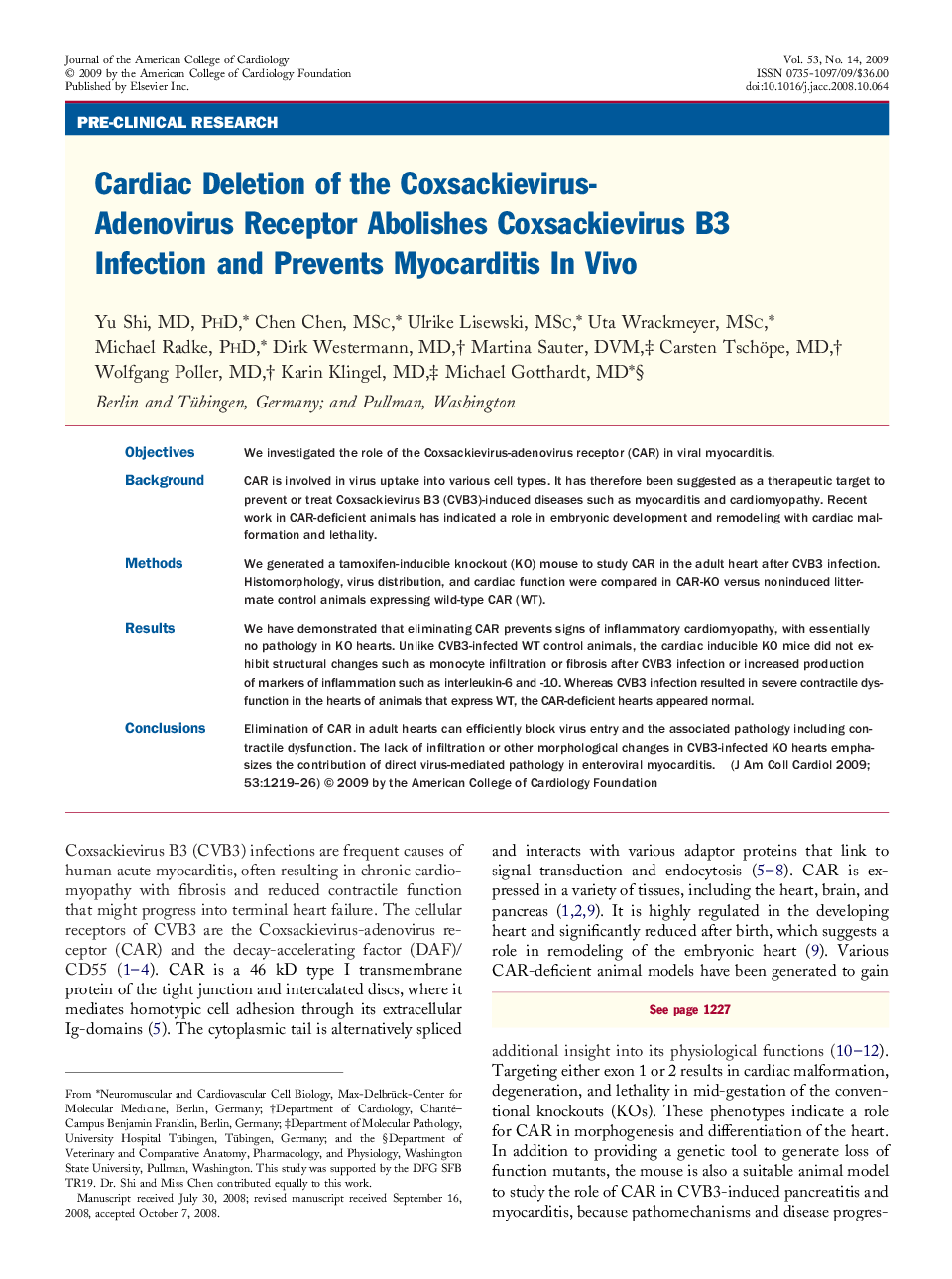| Article ID | Journal | Published Year | Pages | File Type |
|---|---|---|---|---|
| 2949497 | Journal of the American College of Cardiology | 2009 | 8 Pages |
ObjectivesWe investigated the role of the Coxsackievirus-adenovirus receptor (CAR) in viral myocarditis.BackgroundCAR is involved in virus uptake into various cell types. It has therefore been suggested as a therapeutic target to prevent or treat Coxsackievirus B3 (CVB3)-induced diseases such as myocarditis and cardiomyopathy. Recent work in CAR-deficient animals has indicated a role in embryonic development and remodeling with cardiac malformation and lethality.MethodsWe generated a tamoxifen-inducible knockout (KO) mouse to study CAR in the adult heart after CVB3 infection. Histomorphology, virus distribution, and cardiac function were compared in CAR-KO versus noninduced littermate control animals expressing wild-type CAR (WT).ResultsWe have demonstrated that eliminating CAR prevents signs of inflammatory cardiomyopathy, with essentially no pathology in KO hearts. Unlike CVB3-infected WT control animals, the cardiac inducible KO mice did not exhibit structural changes such as monocyte infiltration or fibrosis after CVB3 infection or increased production of markers of inflammation such as interleukin-6 and -10. Whereas CVB3 infection resulted in severe contractile dysfunction in the hearts of animals that express WT, the CAR-deficient hearts appeared normal.ConclusionsElimination of CAR in adult hearts can efficiently block virus entry and the associated pathology including contractile dysfunction. The lack of infiltration or other morphological changes in CVB3-infected KO hearts emphasizes the contribution of direct virus-mediated pathology in enteroviral myocarditis.
